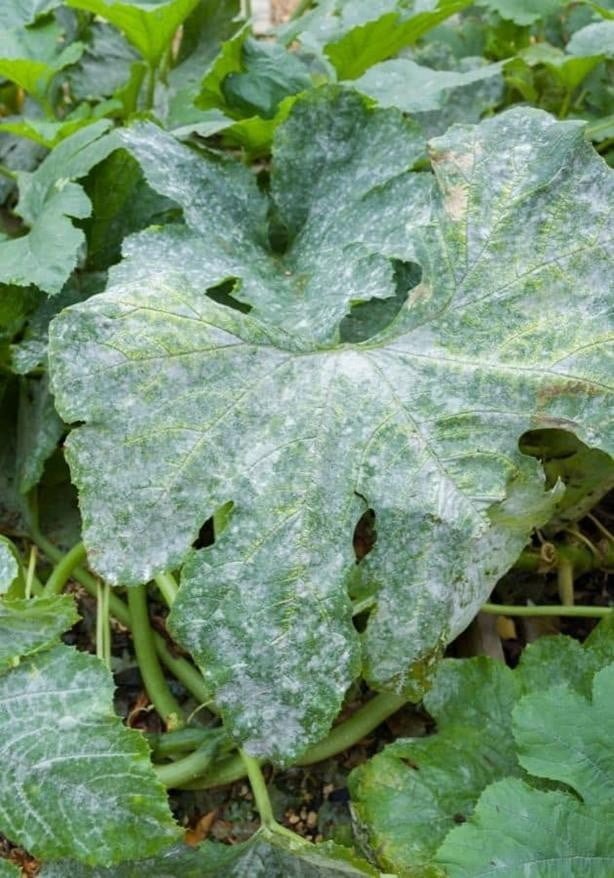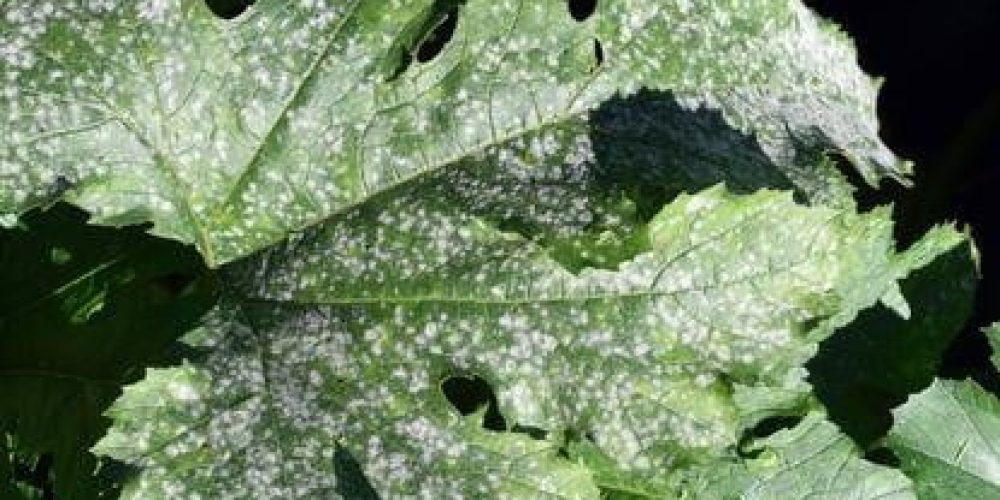Table of contents of the article
Toggle
Zucchini powdery mildew is a fungal disease that causes white spots on the leaves and negatively affects the health and productivity of the plant. In this article on your website, WORLD OF PLANTS, we will learn how to diagnose this disease and ways to prevent it to protect the zucchini crop.
Symptoms of powdery mildew in zucchini
English name: Powdery Mildew
Scientific name: Podosphaera xanthii, Erysiphe cichoracearum
Type of disease: Fungal disease Family: Erysiphaceae
Powdery mildew initially appears as small, white, powdery spots on the upper surfaces of leaves. As the disease progresses, the spots enlarge and cover the upper leaf surface with a thick, powdery white layer. Affected leaves may become distorted, yellow or turn brown, dry out, and eventually fall. The fungus can also infect stems and fruits, causing cracks and scars.
Causes of powdery mildew in zucchini
Powdery mildew is caused by two related fungi, Podosphaera xanthii and Erysiphe cichoracearum. This fungus grows in warm, dry conditions with high humidity.
Conditions for the spread of powdery mildew in zucchini
Powdery mildew spreads quickly in warm, humid environments at temperatures between 20 and 27 degrees Celsius. The fungus produces many spores that can be spread by wind, rain, insects, and human activity.
Disease cycle: Powdery mildew fungi ferment in the form of septic mycelia or cleistothecia (reproductive bodies) on plant residues or in the soil. In the spring, cleistothechia produce sporangia that begin the disease cycle. These spores germinate and form new colonies on susceptible grasses. The fungus then produces sexual spores (conidia) that spread the disease throughout the growing season.
Powdery mildew losses in zucchini
Severe powdery mildew infestations can significantly reduce fruit yield and quality, as well as stunt and weaken plant growth, making it more vulnerable to disease and other environmental stresses.
Strategies to control powdery mildew in zucchini
An integrated approach combining cultural, biological and chemical methods is recommended for effective control of powdery mildew. Preventive measures:
- Planting resistant or tolerant varieties.
- Practice crop rotation.
- Avoid congestion.
- Maintain good ventilation.
- Removal and destruction of the remains of infected plants.
Organic/chemical control of powdery mildew in zucchini
- Use fungicides based on sulfur, neem oil, or potassium bicarbonate solutions.
- Use chemical fungicides containing active ingredients such as mycobutanil, trifloxystrobin, or tebuconazole with caution according to label instructions.
In conclusion, we would like to note that we, at the world of plants website, offer you all the necessary services in the world of plants, we provide all farmers and those interested in plants with three main services::-
- Artificial intelligence consulting service to help you identify diseases that affect plants and how to deal with them.
- Blog about plants, plant diseases and care of various crops ... You are currently browsing one of her articles right now.
- An application that provides agricultural consultations to clients, as well as a service for imaging diseases and knowing their treatment for free – Click to download the Android version from Google Play Store، Click to download the IOS version from the Apple App Store.
References:




